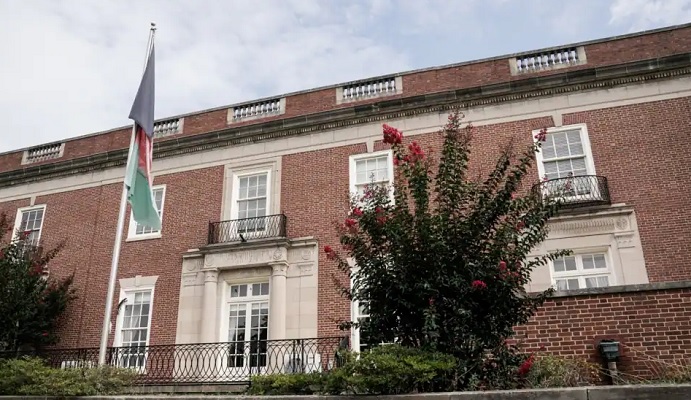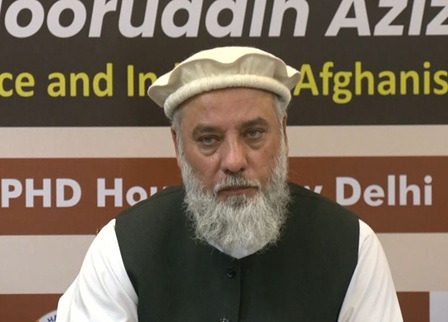
By: Rahmatullah Haand
Studying for MA in journalism and mass communication at Hebei University of China.
Introduction
The Kite Runner is a best-selling novel which has written by Afghan-American author Khaled Hosseini. It was published in English language in 2003 by Riverhead Books and has been translated into Chinese and Russian. The Kite Runner is depicted in a movie with the same name. It is widely appreciated by readers from around the world.
The novel follows the maturation of Amir, a man from Afghanistan who tries to find his way in the world as he realizes that his own belief system is not that of his dominant culture. Set in Afghanistan and the United States, The Kite Runner is a bildungsroman that illustrates the similarities as well as differences between the two countries and the two vastly different cultures. It mainly tells the story of Amir, a young boy from the Wazir Akbar Khan district of Kabul, whose close friend is Hassan.
Besides that, The Kite Runner film, based on the same best-selling debut novel (The Kite Runner) by Khaled Hosseini, released on December 14, 2007 by Paramount Vantage. This American drama film directed by Marc Foster; written by David Benioff (in Dari, with English subtitles). Despite most parts of the film is set in Afghanistan, these parts were mostly shot in Kashgar, China, due to the dangers of filming in the country at that time. The story is mainly set against a backdrop of tumultuous events, from the fall of Afghanistan’s monarchy through the Red Army (Soviet Union invasion of Afghanistan in late 1979) intervention, the exodus of refugees to Pakistan and its neighboring countries as well as to the United States, and the rise of the Taliban regime in mid 1990s.
The film tells the story of Amir Agha, a wealthy Afghan boy from the dominant Pashtun ethnic group, and Hassan his devote best friend, the son of Amir’s father’s servant Ali, who belongs to the historical lower-class Hazara minority. Amir Agha and Hassan spend their happy days in a peaceful Kabul with kite fighting. Baba, Amir Agha’s father, loves both Amir Agha and Hassan, but seems often to favor Hassan for being much manly. Amir Agha’s mother passed away in childbirth, and Amir Agha fears his father may blame him for his mother’s death. However, he has a kink father, Rahim Khan Baba’s close friend, supports Amir Agha’s interest in writing stories.
Assef, from the same Pashtun ethnic group, is a relatively older boy. He blames Amir Agha for socializing with a Hazara boy Hassan, who he thinks is a lower caste and should only live in Hazarajat – central part of Afghanistan where Hazara people live. Assef tries to attack Amir Agha, but Hassan bravely defends him. Hassan is a “kite runner” for Amir Agha. During a kite-flying tournament, an unspeakable event changes the nature of their relationship forever. Since the bad incident (raped) happened to Hassan, Amir Agha keeps distance from Hassan. When Hassan tires to rebuild their relationship, Amir Agha holds it off. He feels ashamed and worries that Baba would love Hassan even more if he knew what happened to Hassan and about Amir Agha’s cowardly inaction.
In order to force Hassan to leave, Amir Agha claims that he has stolen his wristwatch and Hassan falsely but voluntarily admits it. Although Baba forgave him, Hassan and his father Ali leave and do not stay as their servants anymore.
Afterwards, the red army invade Afghanistan. Amir Agha and Baba have to leave the country. Immigrate to United States of America, Bab begins work at a gas station, and Amir Agha takes classes at a local college to improve his writing skills. Amir Agha grows up in the USA, and he eventually meets Afghan woman Soraya Taheri and her family. On that time, Baba has lung cancer but still able to contributes to Amir Agha. Amir Agha marries to Soraya and then shortly afterward Baba dies. Later on, Amir Agha receives a call from Rahim Khan and asks him to come to Pakistan, and the he knows about Ali and Hassan. Ali was killed by a land mine. Hassan had a wife and a son, named Sohrab. However, Hassan and his wife both were murdered by the Taliban. Amir Agha returns to Taliban-controlled Kabul to rescue the orphan Sohrab. He searches for Sohrab at the orphanage but can’t find him. The director of the orphanage tells him that the Taliban commander has recently taken Sohrab. Amir Agha finds Sohrab with the Taliban commander, who is actually his childhood opponent Assef. Assef misuses the orphan. After a short brutal fight, Amir Agha eventually succeed to rescue Sohrab and take him to the United States of America. The innocent orphan finally liberated from the brutal Taliban’s hands, and flies kite with joy and smiles along with Amir Agha and Soraya.
The Kite Runner film in terms of cross-culture, mainly illustrates similarities and differences of the two countries; Afghanistan and United States and the vastly different cultures. This class paper particularly aims to indicate the ‘The Kite Runner’ film intercultural issues. Cultural patterns, stereotypes and intercultural issues in the contexts of education and health care are other key points that will be discussed further in this paper.
Intercultural Communication
Intercultural communication, which is also called cross-culture communication, is a discipline that studies communication across different cultures.
Communication is an important parts of our life, what will you do and how will you communicate with someone from another culture are core concept of intercultural communication. Language may not be the single barrier in communication between different cultures, it may be an issue. But every culture actually has some very different ways of communicating. For instance, the way people are greeting in western countries is totally different from the east. In terms of language; Salam, Ni Hao, Hello, Hujambo and many other ways just to say hello. But in terms of culture also there are different rules in different cultures such as, shaking hands, hug, kiss on the cheeks, and so on.
So, for communicating with the people from other cultures are pretty important to learn their languages and most importantly their cultures. In intercultural communication as a discipline we study the communication skills around different cultures. One of the simple definitions for intercultural communication is as followed, “Intercultural communication is the verbal and nonverbal interaction between people from different cultural backgrounds. Basically, ‘inter-‘ is a prefix that means ‘between’ and cultural means… well, from a culture, so intercultural communication is the communication between cultures. Sometimes, this is used to describe a single person trying to interact in a foreign environment but more often, it is a two-way street, where people from both cultures are trying to improve their communication.” (Muscato, 2018)
The Kite Runner film is consist of many intercultural scenes of Afghan and American cultures, and this class paper also particularly aims to indicate the intercultural scenes of the film.
Intercultural Scenes of ‘The Kite Runner’
As indicated before, The Kite Runner film is based on an inspirational novel written by Khaled Hossieni and provides valuables life lessons of friendship and the two vastly different cultures of Afghanistan and America.
However, the film mostly set in Afghanistan but some portions also have taken place in United Stated of America and Pakistan as well. That made the film unique and appropriate to research for intercultural communication.
As noted in the very first, the film tells the story of Amir Agha and his devote best friend Hassan. Though Hassan and his father are servants, they are good friend as well despite their lord and servant type of relationship. The young boys, Amir Agha and Hassan usually run kites together (hence, the book is titled). Kite-running is displayed as a common entertainment in Afghanistan. Children fly kite, cutting off other kites in the process and then running after them to catch the kite as a prize. Despite a loyal-good friendship, Hassan is Amir Agha’s kite-runner. He is constantly doing whatever it takes for Amir Agha- running kites, standing up for him and assisting him in any possible way. Another important point that should be indicated here is that, Hassan is from Hazara ethnic group, which is a relatively a lower-class and minority in Afghanistan. But the well-to-do Amir Agha belongs to the dominant majority Pashtun ethnic group. Despite their social statuses, they are loyal and best friends. This, however is not a display of culture, but more of loyalty, honor and friendship. Ethnically determined social roles essentially require Hassan to suffer on Amir Agha’s behalf. At one scene of the film, Hassan is harassed and even raped for being a Hazara. When Assef, another Pashtun boy, blames Amir Agha for socializing with the Hazara boy – Hassan – and Hassan bravely stands for Amir Agha and threaten Assef, then Assef says “Pashtuns are the dominant of Afghanistan, what are the scorned Hazara doing here”. After the rape incident to Hassan, relationship between the two boys change and keep distance from each other.
In 1979, the Soviets invade Afghanistan, Amir Agha and his father move to Pakistan and that illustrate another part of the region’s culture and history.
In 1988, they immigrate to California of the USA. These scenes of the film illustrate a great sample of Afghans, live in United States, and try to preserve their culture. Amir Agha’s father, Baba runs a gas station, which is a stereotypical career for an immigrant in the United States. Amir Agha meets an Afghan girl Soraya Taheri and talk to her in several occasions, which is rare or nonsexist back in Afghanistan. Baba asks her father for marriage proposal and then Amir and eventually marry. That is something you wouldn’t find in American culture. The wedding ceremony completes with the Afghan traditions. It yet again indicates a part of the Afghan culture and show that Afghans are not easily adopting other foreign cultures.
Baba has lung cancer and goes to doctor and then finds that the doctor is Russian; he reminds the hardship he went through because of Soviet invasion. He starts hating the doctor, and then walks out the doctor’s office without a diagnosis. This part of the film particularly reflects the health care context of intercultural communication. It also shows the rigidness of Afghans too. There is no language barriers, but stereotype exists. Although his life is at risk, Baba is not ready to break the stereotype.
Amir Agha, after his father’s death, returns to Taliban-controlled Kabul to rescue his childhood friend Hassan’s son Sohrab. He finds it is very different than the country he knew as a young boy. This scene of the film illustrates the cultural changes in Afghanistan due to the Taliban. The country is severely destroyed and Amir Agha even is forced to wear a turban and a fake beard to disguise and not be recognized. He eventually rescues Sohrab and returns to America along with Sohrab. However, Sohrab is uncomfortable there. Obviously, now he lives in a completely different environment and he is not happy there. It shows that, how difficult it may be for immigrants to adjust to a new country, particularly when it was not their choice to relocate. Despite, Sohrab was treated poorly in the orphanage, misused by the Taliban commander, relocating was still a challenge, particularly at a young age.
It is needed to mention that the film was not allowed to be shown in Afghanistan due to concern about angry reaction of the people. Afghanistan is a traditional country and some of the film scenes was the big concern to arouse sensitivity among people, particularly a pivotal scene in which a boy is raped.
Conclusion
The Kite Runner is a unique film. Despite, it illustrates Afghan culture, it also shows the comparisons between the Afghan and American cultures. There are key human values that are international and intercultural, and The Kite Runner portrays these very well.
On the other hand, there are some critiques on The Kite Runner film as well. Despite, a religious context of intercultural communication is also present in The Kite Runner novel, while it is largely missing from the film. According to ground realities, there are some exaggerations particularly in the social status of the Hazara ethnic group. Hazara is a minority ethnic group in the country, but their status in the society is not that much lower as the film illustrated. The film also illustrated the Pashtun majority ethnic group more exaggeratedly brutal and the Hazara’s quite innocent.
References
HOWER, E. (2003, 8 3). Retrieved from The New York Times : https://www.nytimes.com/2003/08/03/books/the-servant.html
Muscato, C. (2018, 4 10). Academy. Retrieved from Study.com: https://study.com/academy/lesson/intercultural-communication-definition-model-strategies.html






